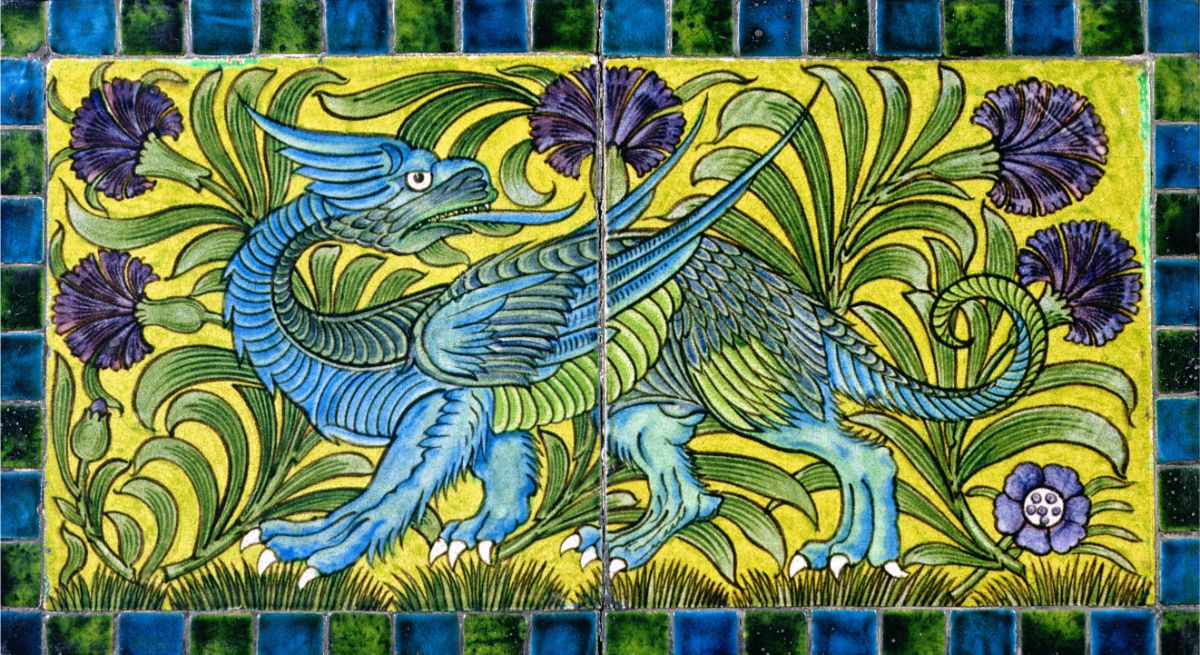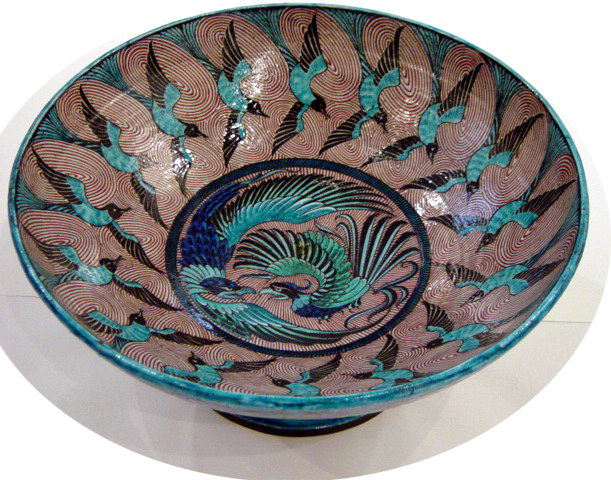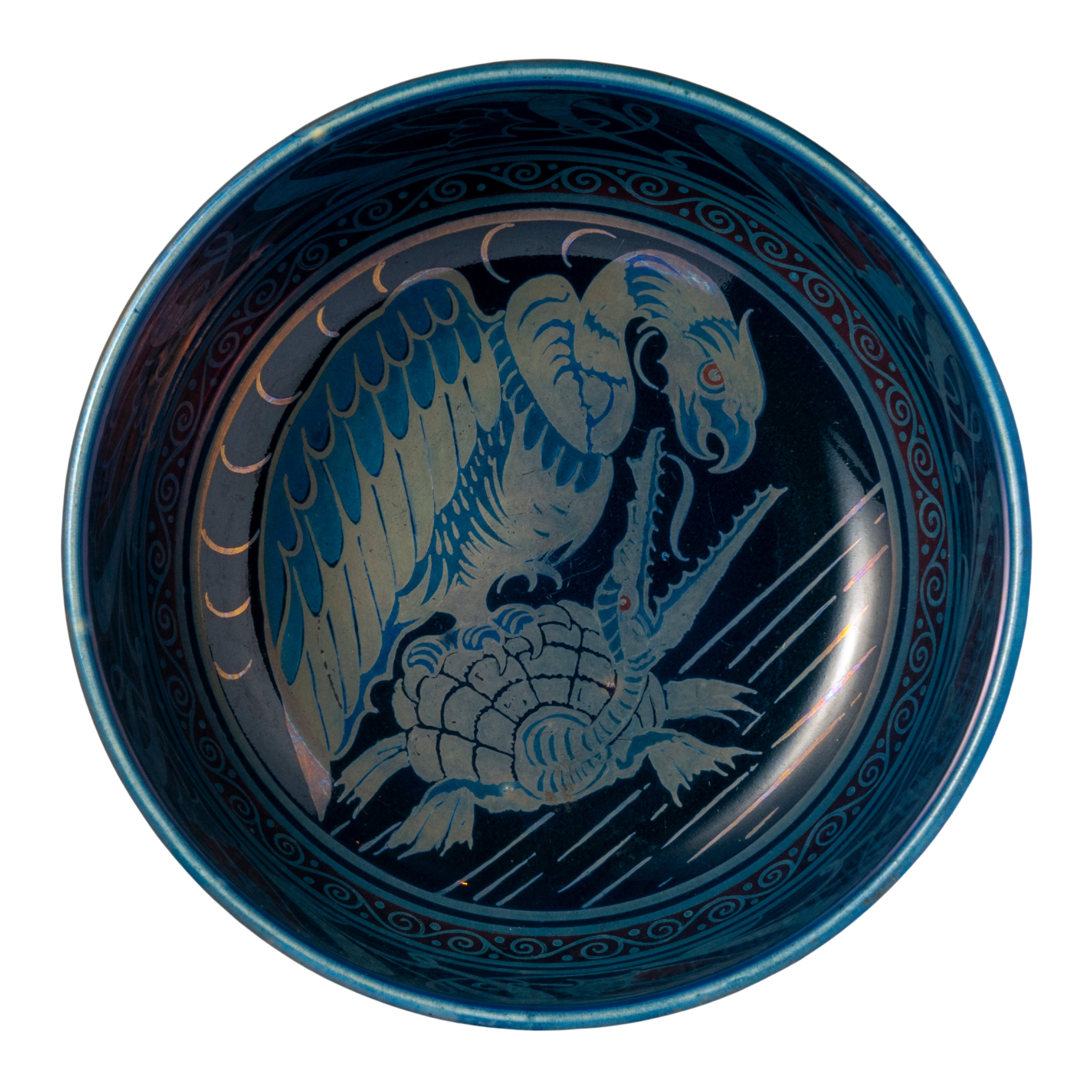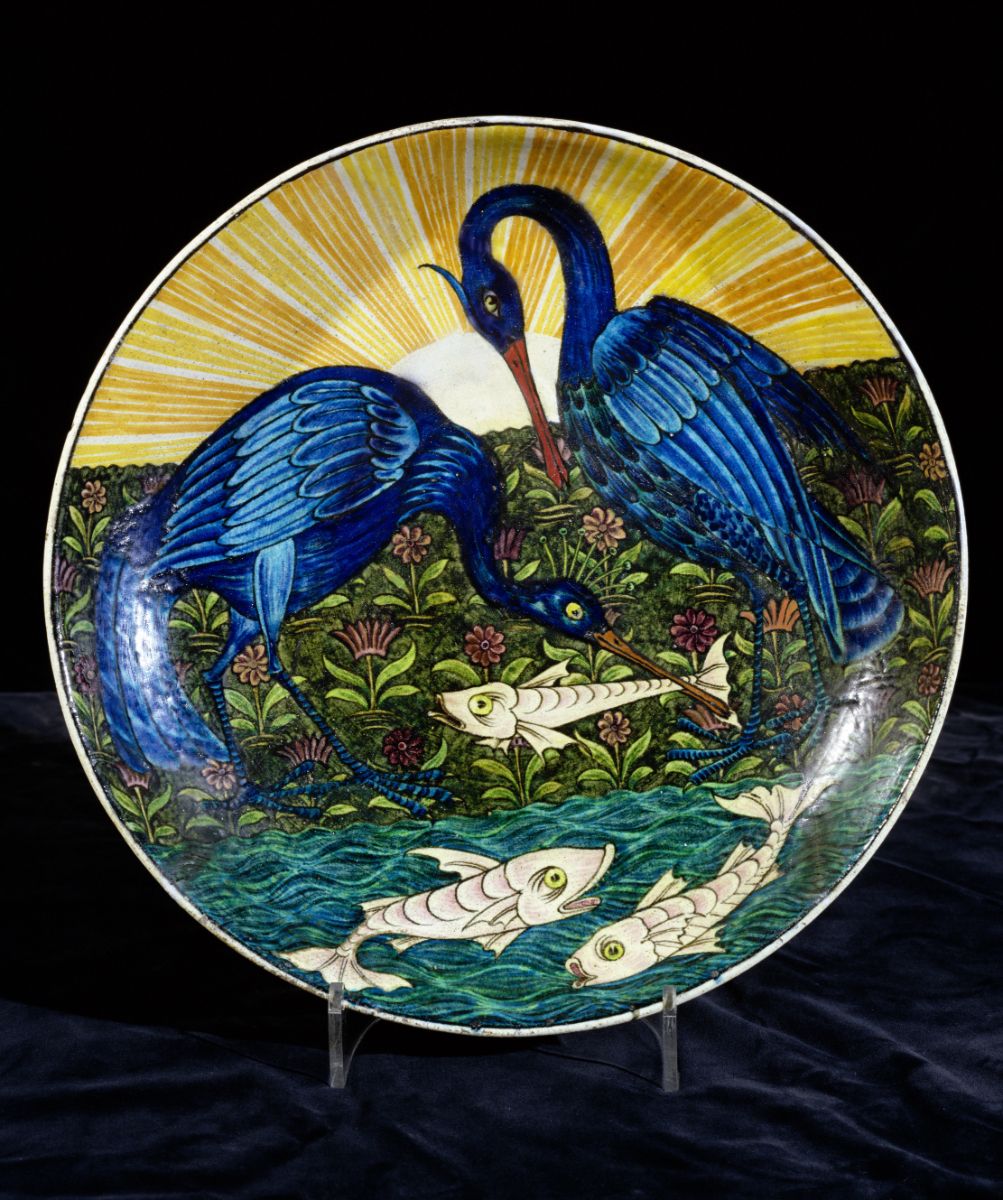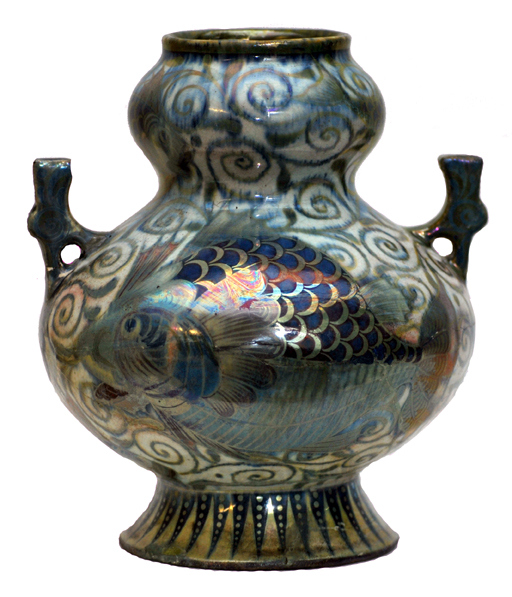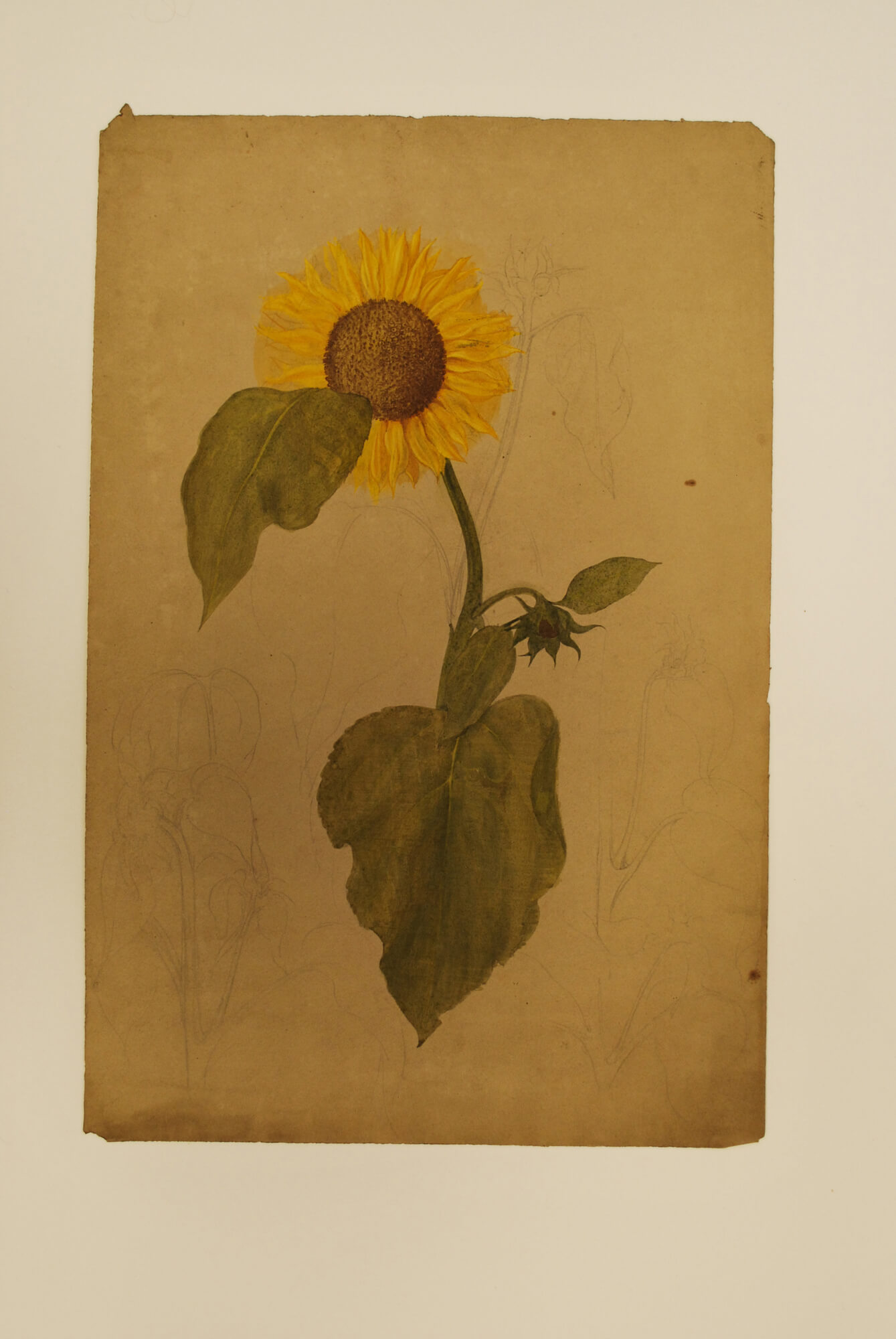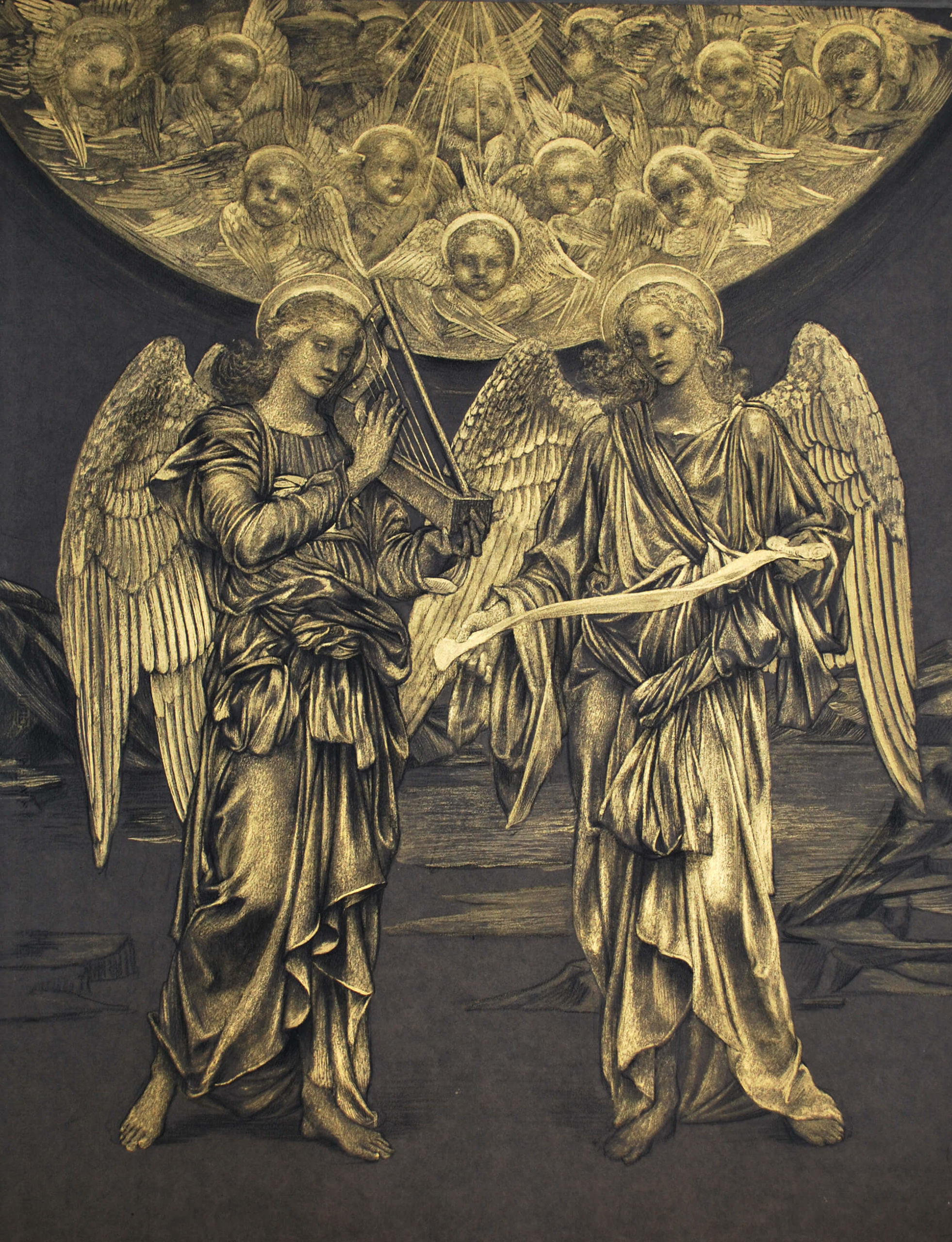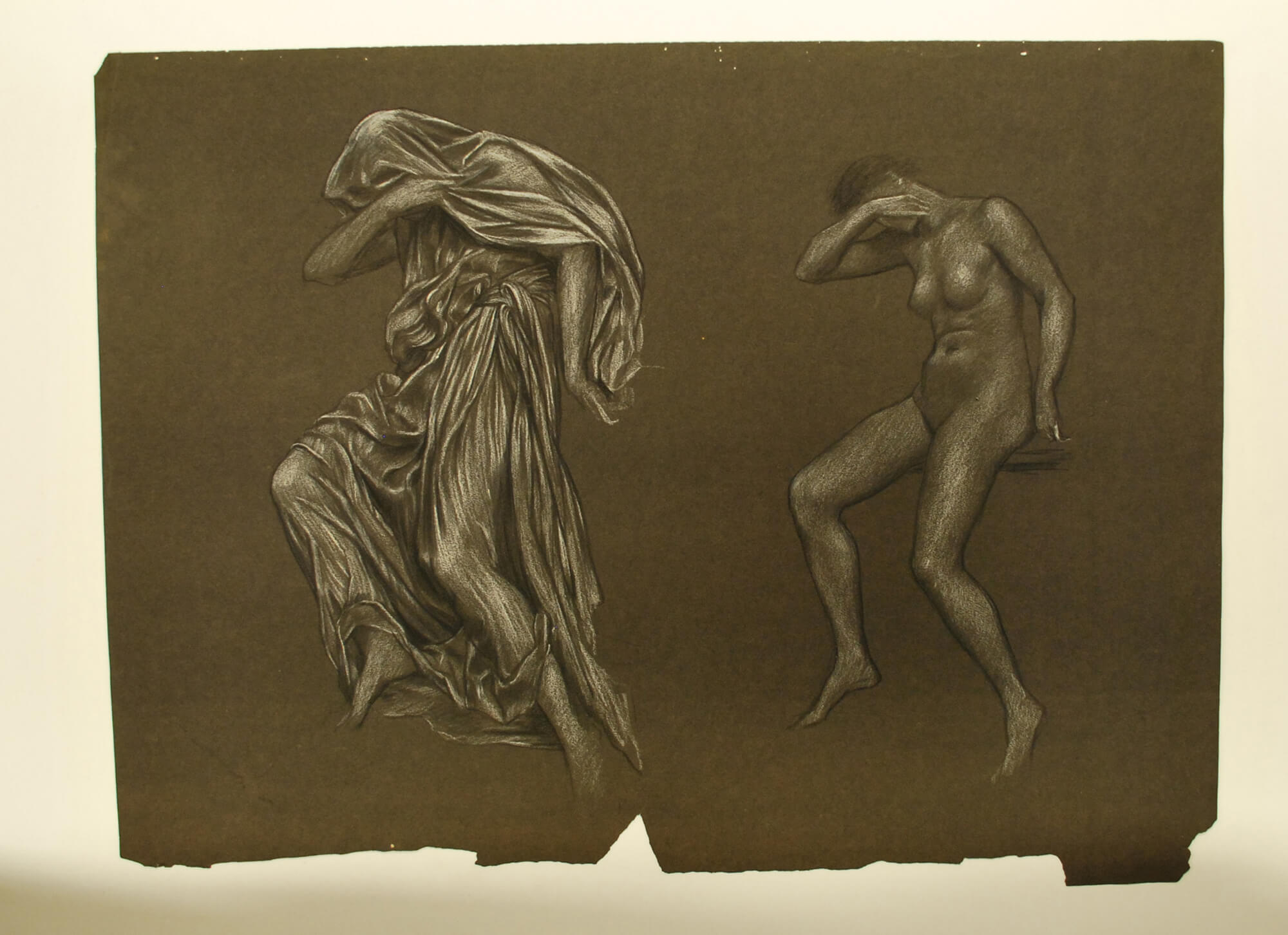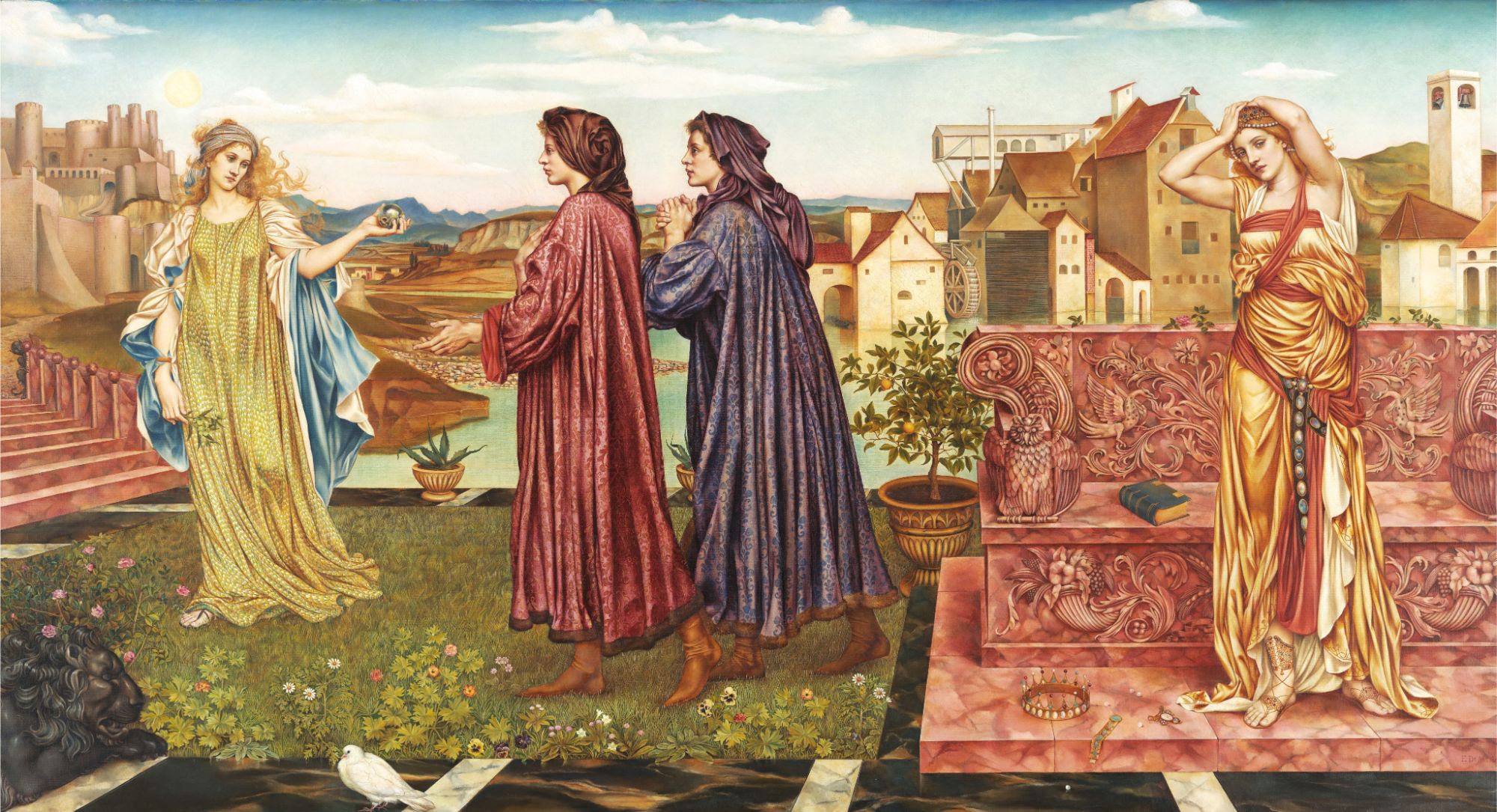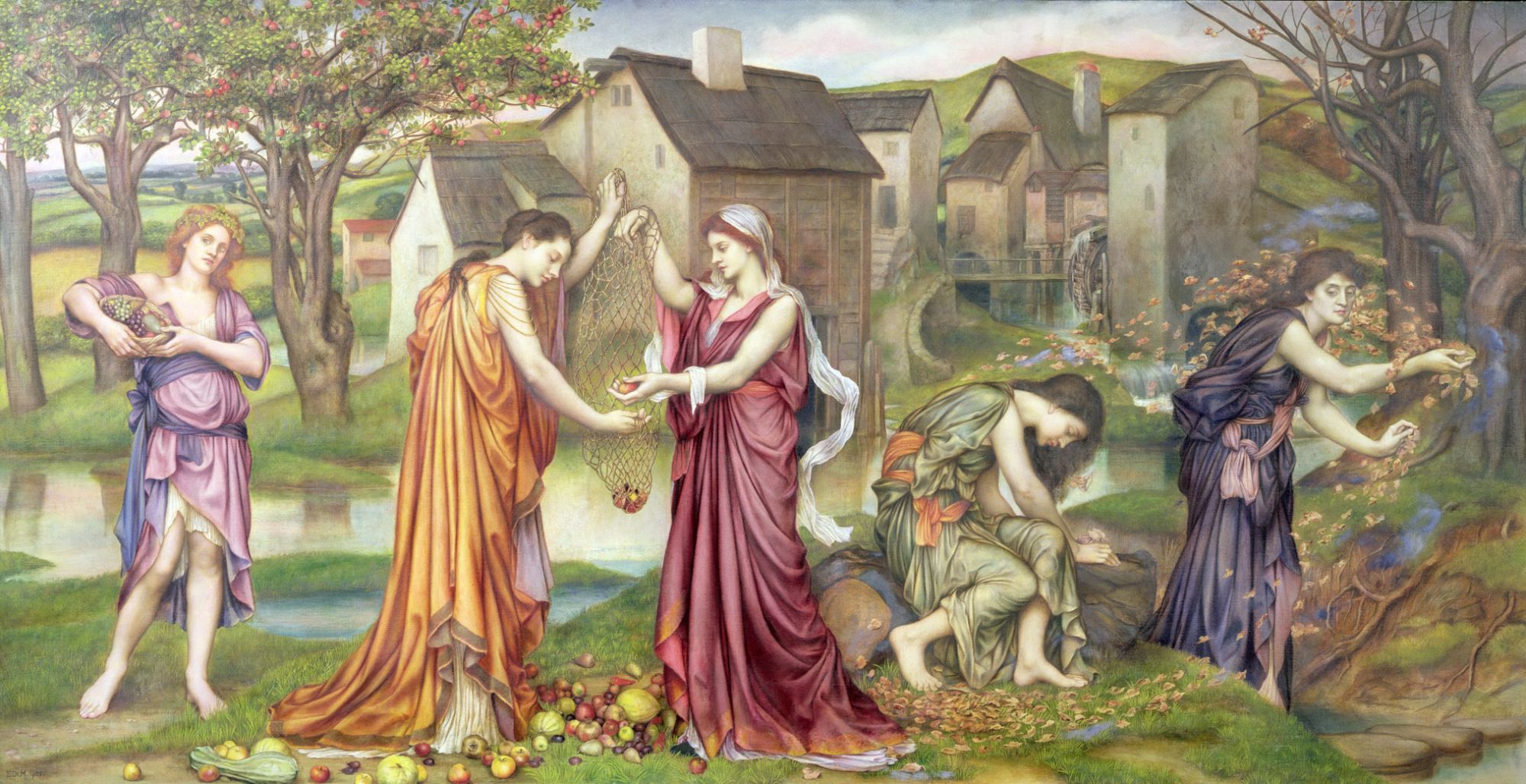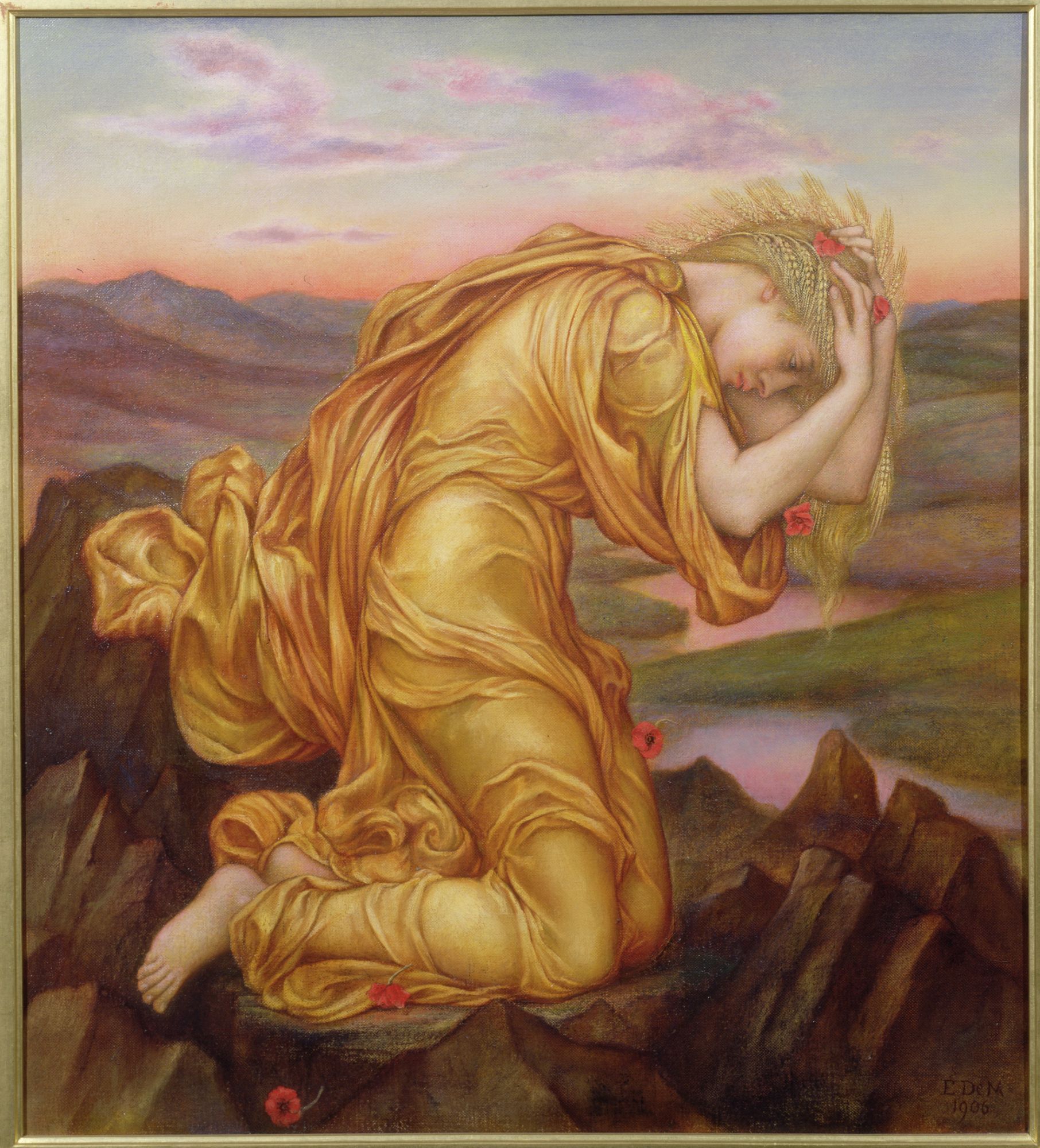Highlights in the De Morgan Gallery at Wightwick
De Morgan Store front sign
Framed tile panel consisting of letters spelling W De Morgan. Designed as a shop sign for his Great Marlborough street store, circa 1886 After De M
Dragon Tile Panel
This tin glazed earthenware tile panel consists of two nine inch tiles, surrounded by one inch border tiles. The spectacular polychrome design depicts a blue-winged dragon with a curved tail, spiked tongue and sharp claws. The bright yellow background is ornamented with green leaves and purple carnations. The vivid and unusual purple glaze was created by the addition of the metal manganese to the glaze recipe. Whilst the bright yellow ground of this tile panel is not typical of Islamic design, carnations are a motif often found on the Turkish and Persian ceramics, which De Morgan was so inspired by. In Western symbolism purple carnations denote impulsiveness and unpredictability; characteristics which one could easily ascribe to the fierce looking dragon. In this way De Morgan often mixed Eastern and Western cultures and traditions in his designs.
Swallow and Eagle Punch bowl
Deep earthenware punch bowl standing on flared foot. Decorated with two eagles in the bowl and a repeating swallow pattern on the rim. The exterior de
Moonlight Suite Eagle and Crocodile Bowl
Earthenware Dish decorated wth a gold lustre Eagle attacking a crocodile on the inside of the bowl. The exterior containing a flower motif - all on a
Dish with Herons and Fish
Tin glazed earthenware polychrome dish. with two herons catching fish on a flowered river bank. Reverse with concentric bands of blue, white and turqu
Two handled vase with fish and branches
Lustre earthenware polychrome two handled vase with fish and branches decorated in smokey mauve and gold lustre
Black and gold compositional study for ‘Gloria in Excelsis’
This compositional study in black and gold for Evelyn De Morgan's painting 'Gloria in Excelsis' can be considered a finished work of art in its own right, which Evelyn would have intended to exhibit and sell. The final oil painting associated with this work is in a private collection. Translated as "Glory to God" the theme of this painting, like many of Evelyn's works from this period, is religious. In this study the two central angel figures are beautifully executed with wings of bird feathers. In the final oil painting it becomes clear that the wings are made of peacock and golden phoenix feathers, symbolic of immortality and renewal. The earth bound angels communicate with the highest order of angels (the six winged seraphim) with the use of the harp, which is a representation of the unifying of earth and heaven or inner spirituality and outer physicality, and thus a symbol which would have appealed greatly to Evelyn. In 'Gloria in Excelsis' the seashore is metaphoric, the rocky outcrop where the angels are situated seems desolate and yet in the final painting spring flowers symbolising hope and renewal are emerging from the otherwise barren ground where the angels tread.
The Garden of Opportunity
In the Garden of Opportunity, we see on the right symbols of learning and wisdom. The bench is decorated with an owl, the wise bird and with the cornucopia of the wealth of the earth. A book lies discarded on the bench. Behind is a church, the medieval seat of learning. The mill and water wheel behi...
The Cadence of Autumn
By 1905 Evelyn De Morgan was 50, she had lived through the Boer War and the outbreak of the First World War. It is therefore, perhaps no surprise that her thoughts become more and more preoccupied with the end of life and death. The adoption of the four seasons to depict the life cycle is a well-re...
Demeter Mourning for Persephone
Demeter was the Greek goddess of the earth, particularly the fruits of the fields, and as normal she is represented here as the corn-goddess. Her hair is covered with ears of corn, from which poppies drop around her. Her daughter, Persephone was kidnapped by Hades and taken beneath the earth to his...



